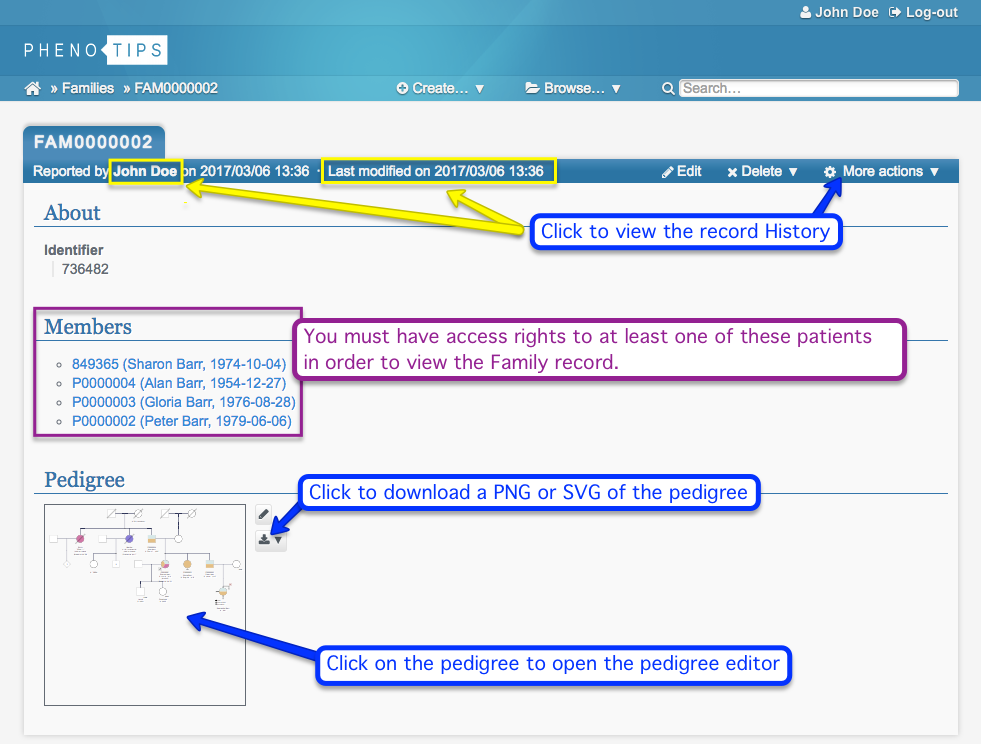Shared Families

Excluding directly adding another user or group as a collaborator to a family record, there are two situations in which a family record might become a shared document between multiple collaborators:
- A patient has a pedigree and is therefore associated with a family record. A collaborator on the patient record with permissions to manage collaborators adds another collaborator to the patient record. The new collaborator will now be able to access the family record with the same access rights they were granted for the patient record.
- A family record contains at least two patient records that are followed by different clinicians and therefore owned by different users. Both users, as well as any collaborators on those patient records, will be able to access the family record, but not one another’s patient records.
In both situations, patient records that the user does not have access rights to will remain inaccessible to the user, even if they share a family record with some of the user’s patients.
Access rights, as extended from patient records to their associated family records:
- View-only: A user with view-only access to a single-patient family record will be able to download an SVG or PNG of the family pedigree, but will not be able to edit the pedigree. A user with view-only access to a multi-patient family record will only be able to see the names and ages of the patients included in the family, with absolutely no view of the pedigree.
- View and modify: A user with modification rights to a member of the family record’s patient record will be able to edit and modify the pedigree. They will not be able to modify any other patient’s data, but they can add and modify family members that do not have patient records, as well as the patient(s) they have access rights to. They will also be granted view-only access to some clinical information pertaining to all other patients in the pedigree, notably phenotypes, disorders, and cancers. If you grant a user modification rights for a patient record, you grant them the right to modify the patient’s pedigree, regardless of whether that pedigree has a single proband or is shared between multiple patients. Please be very careful when granting access rights to the patient records involved in multiple-patient family records.
To learn about the pedigree editor itself, visit our documentation on drawing pedigrees.
Updated 5 months ago
